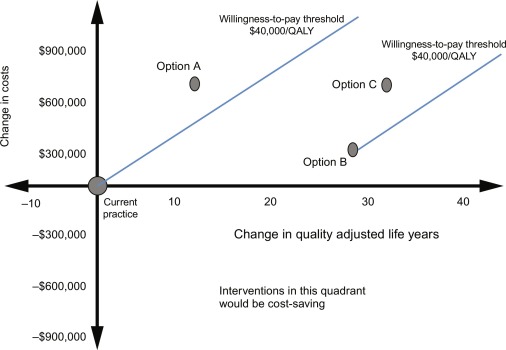3 3 Increasing the Net Assets of a Company Financial Accounting
Content

Net income is shown at the bottom of a company’s balance sheet and is therefore commonly referred to as the “bottom line”. In other words, a company may be able to get by with less than stellar profits for a period of time, but eventually, investors and analysts will take notice and retreat from their stock. In the same way, companies that report consistently positive earnings will generally be rewarded as investors see their past performance as a reason to continue investing in them.
- A decrease in cash flow due to a sharp increase in inventory or receivables can signal that a company is having trouble selling products or collecting money from customers.
- More seriously, however, the claim simply ignores the fact that a lack of cash need not be a barrier to compensating executives.
- This article will provide a quick overview of the information that you can glean from these important financial statements without requiring you to be an accounting expert.
- That extra money had to come from somewhere – and that somewhere is the company’s retained profits.
- Thus, fully diluted EPS numbers still ignore all the costs of options that are nearly in the money or could become in the money if the stock price increased significantly in the near term.
Next comes the firm’s earningsper share, which is calculated by dividing net income by the number of shares. When the stock market boomed in the 1920s, investors essentially had to fly blind in deciding which companies were sound investments because, at the time, most businesses had no legal obligation to reveal their finances. After the 1929 market crash, the government enacted legislation to help prevent a repeat disaster. To this day these reforms require publicly traded companies to regularly disclose certain details about their operations and financial position. It’s management’s opportunity to tell investors what the financial statements show and do not show, as well as important trends and risks that have shaped the past or are reasonably likely to shape the company’s future. At the top of the income statement is the total amount of money brought in from sales of products or services.
Non-Operating Income & ExpensesValues displayed are in thousands.
Some opponents of option expensing defend their position on practical, not conceptual, grounds. Option-pricing models may work, they say, as a guide for valuing publicly traded options. But they can’t capture the value of employee stock options, which are private Does Selling Stocks Increase the Net Income on the Balance Statement? contracts between the company and the employee for illiquid instruments that cannot be freely sold, swapped, pledged as collateral, or hedged. The stock transactions discussed here all relate to the initial sale or issuance of stock by The J Trio, Inc.
- Making investment decisions based solely on tax considerations could result in expensive mistakes that reduce overall returns.
- Accumulated other comprehensive income refers to several items that were not included in net income and retained earnings.
- Net income is the accountant’s term for the amount of profit that is reported for a particular time period.
- It recommended—but did not require—companies to report the cost of options granted and to determine their fair market value using option-pricing models.
- As I mentioned, you can find equity on the balance sheet, usually toward the bottom.
The difference between taxable income and income tax owed is net income. In personal finance, the accounting concept of net income comes into play when individuals or couples prepare their taxes. For the purposes of tax preparation, net income is the amount of income after taxes and deductions for things such as pre-tax contributions to a 401 or child tax credits. However, the Form 1040 that is sent to the IRS does not include a line item for net income.
Why Net Income is Important to Investors
This is because dividend payments from preferred stock are required to be paid, while common stock dividend payments are not. If the current year has different types of loss and deduction items, which exceed stock and/or debt basis, the allowable loss and deduction items must be allocated pro rata based on the amount of the particular loss and deduction items. Using the ordering rule, stock basis is first increased by items of income – so the initial stock basis of $15,000 is increased by the $4,000 net section 1231 gain. When determining the taxability of a non-dividend distribution, the shareholder looks solely to his/her stock basis .
How does selling stock affect income statement?
Companies can raise money without taking on debt by selling new shares of common stock. Although the stock sale improves a company's cash situation, the transactions do not affect the income statement or the profit and loss statement.
Once the balance in the additional paid‐in‐capital—treasury stock account reaches zero, or if there is no such account, the difference is a decrease to retained earnings. If the repurchase price is less than the original selling price, the difference increases the additional paid‐in‐capital account. The sale of preferred stock is accounted for using these same principles. A separate set of accounts should be used for the par value of preferred stock and any additional paid‐in‐capital in excess of par value for preferred stock.
What Are Retained Earnings in Accounting?
The valuation account is used to adjust the value in the trading securities account reported on the balance sheet. For example if the Brothers Quartet, Inc. has the following investments classified as trading securities, an adjustment for $9,000 is necessary to record the trading securities at their fair market value. The effect of issuing stock https://business-accounting.net/ for cash shows on the balance sheet and the cash flow statement but there is no common stock on the income statement. The income statement captures and records the revenue- and profit-generating activities a company engages in. The balance sheet documents what your company owns and owes – its assets, liabilities and shareholders’ equity.
My Size : Other Report or Announcement – Marketscreener.com
My Size : Other Report or Announcement.
Posted: Sat, 11 Feb 2023 22:46:05 GMT [source]
Information for calculating capital gains and losses can come from the depreciation schedule and/or IRS Form 4797. Most of the information needed to prepare an income statement can be found in common farm business records. These include a farm account book or program, Internal Revenue Service forms 1040FProfit or Loss From Farming and 4797Sales of Business Property, and your beginning and ending net worth statements for the year.
Does a Company Pay Taxes on Accounts Receivable?
If the company decided to sell off some investments from an investment portfolio, the proceeds from the sales would show up as a cash inflow from investing activities because it provided cash. The above procedures were first created in 1993 and have been used since that time. Interestingly, in 2007, FASB passed a rule that allows companies to elect to report available-for-sale investments in the same manner as trading securities. Thus, if that election is made, the $3,000 unrealized gain above is reported on the income statement despite the intention to hold the securities for an indefinite period. This is another example of accounting rules that are not as rigid as sometimes perceived.

When this occurs, the common stock and additional paid‐in‐capital accounts are decreased for the amounts recorded in these accounts when the stock was originally issued and cash is decreased for the amount paid to repurchase the stock. If the repurchase price is more than the original issue price, the difference is a decrease to the additional paid‐in‐capital—treasury stock account until its balance reaches zero.
The purpose of this statement is to demonstrate a business’s financial heath at any given time, by enumerating it assets as well as the claims against them . For example, a relatively young startup company may be growing quickly and generating significant profits. However, instead of issuing a dividend, they may choose to put the money that would have been used for dividends into operational improvements to enhance efficiency and create further growth. Contrast that with a blue-chip company that may choose to allocate a portion of their profits to pay a dividend. Both companies may be exceptional companies, but for different reasons, they are choosing to allocate their resources in different ways. The extent to which one option is seen as better than another is from the perspective of the investor and what their objective is for owning the stock. Suspended losses and deductions due to basis limitations retain their character in subsequent years.
As we have pointed out, it is a fundamental principle of accounting that the income statement and balance sheet should portray a company’s underlying economics. Relegating an item of such major economic significance as employee option grants to the footnotes would systematically distort those reports. Subsequently, the extraordinary boom in share prices made critics of option expensing look like spoilsports. The spate of corporate accounting scandals in particular has revealed just how unreal a picture of their economic performance many companies have been painting in their financial statements. Increasingly, investors and regulators have come to recognize that option-based compensation is a major distorting factor. Had AOL Time Warner in 2001, for example, reported employee stock option expenses as recommended by SFAS 123, it would have shown an operating loss of about $1.7 billion rather than the $700 million in operating income it actually reported.

No comments